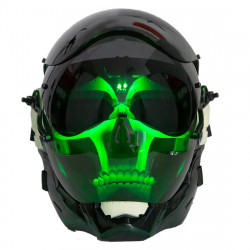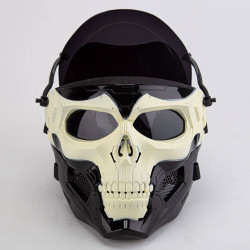3D Printed DIY Toy
Print Your Play: The Rise of 3D-Printed DIY Toys
3D printing has changed the game for toy designers, enabling them to create their custom action figures, dolls, and other toys at home. This guide examines the rise of the 3D-printed DIY toy and its move from underground to mass market, its many and varied uses, its best designers, and some practical advice for getting started.
Why 3D-Printed Toys Are Exploding
Accessibility
The popularity of 3D-printed toys lies in their accessibility and ease of customize and produce using 3D printers. Hobbyists can print toys for far less than they would cost to buy at the store, and children and adults alike can find themselves empowered to create their own playthings. Large companies, including Hasbro and LEGO, already use 3D printing to prototype and produce short runs of custom toys, suggesting the industry has arrived in the mainstream.
Cost
One $20 roll of filament can be swapped out to turn dozens of toys, including 500 small rings or eight action figures.
- Customization: Customize or create your designs using free Tinkercad software.
- Community-Powered: Open-source design promotes innovation and collaboration.
Impact on the Toy Industry
3D printing is transforming the $135 billion toy industry by allowing production on demand and decreasing waste. A 2017 report found that one 3D printing repository saved consumers at least $60 million on an annual basis by replacing store-bought toys. Enter companies like Toybox Labs, which sells kid-friendly printers featuring licensed designs (Minions, SpongeBob), combining the DIY ethos with branded play.
- Sustainability: Print-on-demand prevents waste by not overprinting.
- Repairability: Print replaceable parts for broken toys to give them a longer life.
- Indie Growth: Small makers grow with platforms like Etsy as they hawk their unique 3D-printed toys.
Advantages of 3D-Printed Do-It-Yourself Toys
There are several advantages for 3D-printed toys compared to conventional toys, and they have become very popular among makers, kids, and educators. It’s these advantages that are fueling their popularity and variety of uses.
Cost Savings
It’s much cheaper to print toys at home than to purchase them at the store. A roll of PLA filament ($20–$30) will print many toys for a savings of 75–90% vs. buying commercial versions. For example, a 3D-printed LEGO-style block costs pennies instead of dollars each for a brand-licensed one.
- Cheap Material: PLA is an easy-to-afford, non-toxic plastic that won’t harm the environment.
- No Middleman: Printing directly bypasses costly retail markups.
- Scaled: Print 1 toy or make a dozen using the same spool of filament.
Customization and Creativity
3D printing means toys can be personalized to color preference and desired features. Beginners can use free tools like Tinkercad to design toys, or, though they can’t upload their designs, modify existing ones using platforms like Toybox’s Creator Space. Personal value is also reinforced with custom toys, much like how blind children touch their own printed drawings.
- Exclusive: Make unique toys or modify existing STLs.
- Educational Value: Kids learn STEM skills thanks to design and printing.
- Emotional Impact: Customized toys provide a stronger sense of involvement and emotion.
Sustainability and Reparability
Unlike manufactured toys, 3D-printed toys are good for the environment. Dangling elements to minimize is a standard placeholder, though printing on demand ensures there is minimal excess inventory; also, PLA is plant-based and biodegradable! Websites like Toy Rescue offer printable parts to repair broken toys, increasing their longevity and cutting down on landfill waste.
- More with Less Waste: Only make what you need. Reduce the production of extra pops.
- Recyclable Filament: Use recyclebot-type systems for post-consumer filament.
- Playing Favorites: Easy-to-replace lost or broken pieces.
Cool 3D-Printed DIY Toys and Games
There is a huge selection of 3D-printed toys that cover anything you propose to touch, from consumers, enthusiasts, people who have an interest, and for kids as well. We have below are some of the most popular categories and examples, often found as free STL files on MakerWorld or Printables.
Fidget Toys
Simple, fast-print fidget toys are excellent for beginners. Distracting designs, such as musical fidget boxes, infinity cubes, and gear spinners, come with tactile fun. Just today there was an X post about a fidget toy based on the M1 Garand reload, showing the vast array of ideas they have.
- Examples: Kobayashi Fidget Cube, musical Super Mario tune boxes.
- Time to Build: 5 minutes (ninja star) up to 2 hours (complex spinners).
- Why Popular: Customizable, kid-friendly, and calms nerves.
Action Figures & Collectibles
Poseable action figures, whether superheroes or Pokémon, are hot among collectors. Articulated-jointed, silk PLA gloss finishes add realism to designs. Etsy sellers have cool and unique-looking figures, such as an articulated dragon that has outstanding feedback for being a decent figure.
- Examples: Wolverine action figure, Pokémon spawn eggs.
- Work Time: 2–4 hours for detailed models.
- Why It’s Popular: Can be customized for cosplay or fandoms and is sturdy for play.
Vehicles and Playsets
Toy cars, planes, and sandbox sets usually have relatively quick prints and will often contain moving parts. Designs such as foldable gliders or modular race cars inspire imaginative play.
- Examples: Sandbox toy, collapsible lightsaber.
- Build Time: 10 minutes (flat cars) to 4 hours (detailed trucks).
- Why Popular: Quick prints, adaptable for a range of ages.
Educational Toys
Dinosaur skeletons, robot kits, and board game pieces that teach STEM concepts. 3D printing a T-Rex skeleton in wood-infused PLA with a realistic texture and printing modular robots brings in the mechanics. These toys can also be used as classroom tools.
- Examples: Articulated dinosaur bones, custom chess sets.
- Build Time: 2–6 hours (if you want fancy stuff, you may consider it even longer).
- Why It’s Cool: Packs in education with entertainment, perfect for schools.
Board Games and Puzzles
Board games, like printed chess sets or collaborative “Save the Planet,” provide family gaming fun. Personal touches, like a Milan skyline chess set, provide pizzazz. These solutions are inexpensive, as they cost 75–90% less than retail games.
- Examples: 3D-printable checkers, surprise egg puzzles.
- Construction Time: 1–5 hours for full sets.
- Why It’s a Favorite: Keeps kids channeling energy, replaces lost pieces.
Starting with 3D-Printed Toys
Getting your feet wet with 3D printing is easy with the right tools and the right knowledge. Here are the basics and beginner’s intelligence to get started with making your toys.
Equipment and Materials
For all but the most complex toy projects, a basic 3D printer like the Creality Ender-3 ($200 to $300) will do. Due to its low cost and biodegradability, PLA material is the main choice of material for 3D printing work. Toybox printers, which are aimed at young children, make that process easier with preloaded designs.
- Printer: STL, OBJ, and 3MF files are compatible with budget printers.
- Filament: PLA ($20/roll), avoid the toxic ABS for kids’ stuff.
- What You’ll Need: Tweezers, pliers, and a clean print bed for accuracy.
Software and Design
Design or modify toys with free software like Tinkercad or Blender. You can download ready-to-print STL files in Thingiverse, Cults3D, or MakerWorld. Slicing software (e.g., Cura) transforms maquettes into G-code compatible with the printer.
- Design Tools: Tinkercad is a fantastic free design tool for beginners, while intermediate and advanced users can work their magic with Blender.
- File Sources: Free Printables or paid Etsy files.
- Slicing: Modify infill (10–20% for toys) to be strong and quick.
Safety Considerations
Please be aware of safety when using, and it is recommended to use non-toxic PLA material to print; in addition, printing in a ventilated environment is recommended to avoid harmful ABS fumes. Sand rough edges down to avoid injury. Make sure that kids are supervised while printing, and no small parts are used for young children.
- Material Safety: Keep to PLA for kid-safe toys.
- Post-Processing: Sand or paint for a smooth, friendly finish.
- Age: Small parts could cause a choking hazard (under 3).
How to Design and 3D Print Toys that Children Will Love
Get printing straight away with these quick tips, perfect for newcomers and confident makers alike.
Start Simple
Start with simple designs, such as fidget spinners or flat cars, to get to know your printer’s capabilities. These require five to 30 minutes, and they result in a sense of confidence. Look for inspiration in X, such as the geometric toy by @Rainmaker1973.
- Fast Projects: Throwing stars, little rings.
- Settings Operations: Master bed leveling and infills.
- Test Prints: Always try small prints first.
Customize and Experiment
Customize objects with a personal touch, such as painting a Pokémon spawn egg with gold PLA or adding hinges to action figures. Opt for silk PLA for a shiny surface or wood-infused PLA for dinosaurs with texture.
- Filament Variety: Experiment with matte, silk, or glow-in-the-dark PLA.
- Finishing: Paint, then add decals for a more realistic touch.
- Modular Design: Print interchangeable parts for vehicles/robots.
Optimize for Durability
Sturdier toys can be printed with 20% infill and a layer of 0.2mm. Print at 60mm/s; the bed should be level, which reduces the chance of warping out. For moving components, such as fidget gears, some lubricant after printing may be applied for smooth operation.
- Infill Percentage: 20–30% for robust but lightweight toys.
- Print Height: 0.1–0.2mm for detail and strength.
- Maintenance: Keep the printing surface clean and check the nozzle for damage.
Challenges and Solutions
There are hurdles to 3D printing toys, but these strategies will help you succeed. If you resolve these typical problems, you’ll be on the elevator to Successville.
Print Time and Patience
Complex toys, such as action figures, may require 4+ hours, disappointing impatient kids. Start with short prints (like the 5-minute ninja star) and work up to multi-session projects. Opt for a high-speed printer, such as the Toybox Comet.
- Solution: Hold your smaller prints in line for immediate satisfaction.
- Pro Tip: Schedule longer prints at night.

